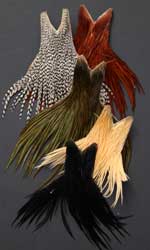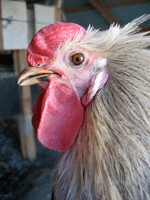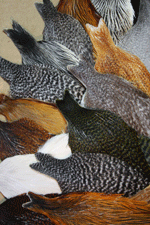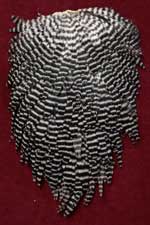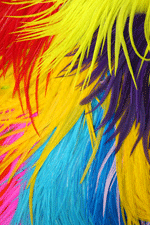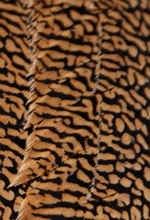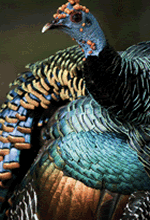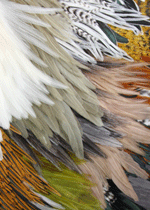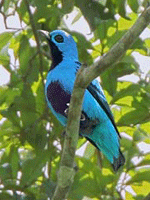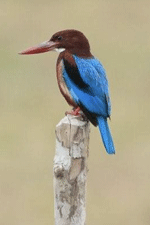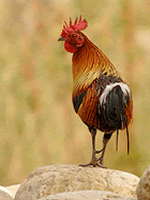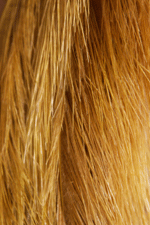
Feathers for tying Trout Flies
Without question, the greatest selection of feathers for fly tying that you will find anywhere.
From the highest quality Whiting Farms hackle - you'll find nothing better for tying any dry fly, soft hackle, or streamer patterns...
To unbelievably beautiful exotic feathers - from which Paul Smookler
Tying an Adams - a favoite pattern for may tiers.
Best Selling Feathers for tying Trout Flies
Here are some suggestions for feathers that are used in tying trout flies. This page is divide into the following types of trout flies. Click on one of these links:
Each of these catagories has links to a "must have " list of feathers for tying most patterns. And as always, if you have any questions, please call!
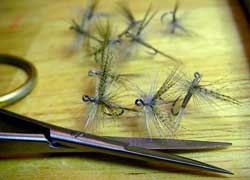 |
Hackle for Dry Fly Patterns In tying dry flies, the hope is to imitate as closley as possible the adult stage of the mayfly. After the hatch, they mate, lay their eggs. The spinner you see on the waters surface is the final stage in the life cycle. |
Links
To tie a good dry fly you'll need hackle with stiff barbs and a strong flexible stem. These capes tie everthing from an #8 to a #28 come in a wide selection of colors to immitate any fly you'll see out on the stream. Wings on a dry fly should be small webby feathers with rounded tips to give your fly a realistic silhouette on the water. Todays hen capes are too pointy and dry fly like. These feathers solve that problem. This is by far the best tailing material for tying dry flies. The barbs are long and stiff, supporting your fly on the waters surface. The speckling on each barb gives the tail a true buggy appearance.
As every fly tyer knows, there is something magical about how the light reflects off peacock herl when it's in the water. Trout find it irrisistable so it's no surprise it is found in so many fly recipies.
|
Harry Darby and Andy Miner bred the finest feathers for tying the quill gordon, blue quill, and blue wing olives. These catskill style patterns are every bit as effective today, and thanks to one breeder, so are the feathers.
These delicutly barred flank feathers make beautiful wings on such flies as the hendicksons and the drake. Some use dyed mallard as a sub, but as you'll see, there's nothing like the real thing. Another style of tying in wings is to use duck quills. The picture is of a no hackle bwo. Another popular fly is the royal coachman, seen in the picture on the left, with it's stunning white quills tyed in as wings.
Another style of tying in wings is to use duck quills. The picture is of a no hackle bwo. Another popular fly is the royal coachman with it's stunning white quills tyed in as wings |
||||
| top | |||||
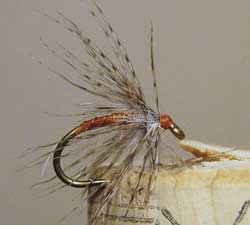 |
Soft Hackle for Nymphs & Flymphs Subsurface feeding accounts for 90% of a trouts diet. Enough said, so lets take a look at some of the feathers you will want in your arsenal! |
Links
|
Hen feathers offer a wide range of colors and fiber lengths for tying wingless wet flies. This also includes coq de leon hen and brahma hen. The feathers are soft and webby, able to soak up water so that your fly sinks and stays under water. A well marked pheasant tail is a must have. The fibers make great bodies, leggs, and tails and their movement in the water gives the nymph a natural appearance. It's the only feather used in the pheasant tail nymph pattern. The brown and tan mottled apearance of feathers on the back of a grouse creates a nice effect on soft hackled nymphs and make them very good feather to have in your tying arsenal.
The woodcock feather is one of the softest feathers for hackling soft-hackle collars, perfect for fishing in clear still waters. The movement is subtle and the mottled color closely resembles the naturals. Peacock herl has an irredecent quaility that fish find irresistable. Uses include tailing or body material such as in the Zug Bug as well as wingcases like in the Gold Ribbed Hare's Ear The very small grey and dunn colored feathers on the top and underside of a mallard wing are extreemly webby and are perfect for tying PMD of BWO patterns that immitate the wings of emerging mayflies. Try teal wings for small flies. |
If you're going to tie soft hackles, a good partridge skin should be first on your list. The feathers do a remarkable job of giving the impression of an insect's leg segmentation. Feathers range in color from grey to tan to mottled brown. Even though these are rooster saddles, they are bred to be used for tying soft hackle flies. The fibers are soft and there is a lot of webbing in the feathers. They are great for tying wooly buggers! Starling is a very useful feather for tying small nymphs. Starling and purple is an easy fly to tie and very effective. Feathers range in color from dunn to beattle green with tan tips alowing for many interesting patterns.
Quail feathers are perfect for hackling small flies and are a blend of tan, brown, white, and grey with a distict mottled appearance. Bobwhites are nice but be sure and check out the other species that I've listed.
Biots can be used for wings such as on the prince nymph. Another use is a body material. When used to imitate the abdomen, the biots ridge suggests segmentation similar to the naturals.
Long wide webby well marked feathers are the hallmark of a good matuka feather. These feathers are solid web - right to the very tip. Give them a try, they are a very effective fly.
|
||||
| top | |||||
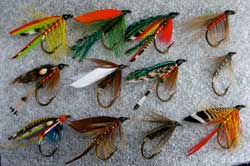 |
Feathers for Wets Winged wet flies are my favorites. They are simple and elegant. They are fun to tie, they look good all lined up in a fly box, and best is that they catch fish. In this section I've listed some of the "must have" materials you'll need, and a picture of a fly showing how they are used. |
Links
The white wing on a "Royal Coachman" is tyed with duck quill. And as you'll see on some of the flies that follow, duck quills are dyed to just about evey color you can imagine.
The "Catskill" uses gadwall for both it's wing and tail. Just about any other duck flank such as teal, mallard, or pintail can be used in the same way, each having it's own unique size and color. Goose shoulder marries well and is easily dyed to many colors, as seen here in the "Silver Doctor". The fibers are long enough to tie a larger wing and strong enough to hold their shape. The "Abby" is just one of countless patterns that use the tippets from golden pheasant for tailing material. But there are many other feathers on this bird that you can use in tying wets. The red on the breast makes striking throats and tails. The irredescent blue on the secondary wing quills make for a striking wing. The "Butcher" uses mallard, but don't be afraid to experiment with other colors found on the different breeds of ducks. "Tomah Joe" show season is just around the corner! As with every year, I will have the same wide selection, plenty to pick through, and off course, a few new offerings to grab your attention Almost every feather on a peacock has a use in tying wet flies; swords for tailing as in the "Cassin" fly; herl for bodies; blue neck feathers for throats; and mottled wing quills for winging. Did I miss anything?
|
The "Brandreth" pictured here is a good example of how hen saddles can be used for throats and tails. The colors are bright and the thicker fibers give the fly a nice look. Oak Turkey is used on many patterns as a winging material. It is available in light, medium, and dark shades. Here in the "Governor" the mottling is on the dark side.
"Greenwells Glory" is one of the most commonly fished flies in England. The collar on this fly is a greenwell hen cape - dark center with ginger edges. The saddles have a heavier fiber and make nice full throats.
Adding a junglecock eye to a fly seems to finish the fly and sets it off. Check out the "Telephone Box", the black of the junglecock against the white duck quill really ties the colors of the fly together.
The wing on the "Fish Hawk" here is tyed with hen pheasant wing quills. The fibers are shorter than turkey but the delicate brown and tan mottling makes for a nice effect. The "Beauty" is an elegant fly that uses guinea wing quills for the wing and tail. Smaller body feathers, both natural and dyed, are nice for throats. Make sure to check out the color difference in some of the other breeds.
|
||||
| top | |||||
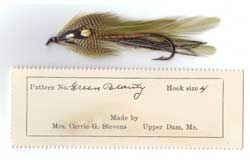 |
Streamers Feathers Here are a few suggestions to get you started. I have a great selection of different feathers and color patterns so that you can tie just about any pattern. To see my complete selection of these feathers, please visit my page on Streamer Feathers. |
Links
|
These feathers come off my saltwater line and are perfect for tying streamer patterns. They are wide, webby, stiff feathers that hold there shape. If you're looking for bright colors, check out my saltwater page. The streamer in the picture is an old pattern and uses golden pheasant crest as a wing. There are so many uses for just about every feather on this bird, having a whole skin is a must. Peacock herl is used in tying endless patterns. Whether it be used for tailing, body, winging, or any other use you can think of, it makes for a great fly. Take a look at the half moon feathers, they make nice cheeks. Long wide webby well marked feathers are the hallmark of a good matuka feather. These feathers are solid web - right to the very tip. Give them a try, they are a very effective fly.
|
The grey ghost is a great example of how silver pheasant can finish off a fly. Check out the dyed colors - they make nice throats.
The longer feathers on a hen cape make for nice wings on smaller streamers. And the saddles are perfect for tying in throats. Be sure to take a look at the natural colors in the Whiting Hen Hackle Line. For nice throat, tails, or cheaks on streamer patterns, teal, gadwall, or wigeon are a must have. And be sure to check out the exotic species too!
Tied in as a tail on a wooly bugger, the marabou breathes life into the fly. The long soft fibers can also be used to wrap incredibaly life-like fly bodies. Another popular use for marabou is to tie it in as a wing on a streamer pattern. The fluid motion in the water in unmatched by any new fangled sythetic! |
||||
| top | |||||
 |
Terrestrials By the time summer rolls around it's time to pull out a grasshopper or two and see if that might get the trouts attention. Beetles and ants can also prove to be some deadly patterns and here are a few feather suggestions to get you on the right track. |
Links
Trout love ants, and with a black cape you can tie tons of ants, black caddis, and beetles just to name a few. Soft hackle rooster saddles are also useful for tying terrestrial patterns. The fibers are not as stiff as dry fly and have more movement in the water. The long fibers on a pheasant tail feather are perfect for imitating the legs on many terrestrials such as grasshoppers and crane flies. Tying knots for leg joints gives it a natural look.
This nice little caddis fly pattern uses mottled turkey for its wings. Grasshopper patterns are another example of how the interesting color pattern on this feather can imitate the natural.
|
The wings on a Spruce moth or fly are tyed with feather tip of a silver badger hen cape. Hen feathers come in so many colors, are soft, and can be used for tails, collars, or palmered over the body of the fly.
Teal can be used for small tails or throats on your fly. Its delicite barring also gives the impression of leg segmentation. Other species of duck work well too, so be sure to check them out.
|
||||
| top | |||||
Ordering
If you'd like to place an order, the best way is to e-mail me a list. If you don't see just the exact color of something you're looking for, or you're just about out of a hard to find color, please ask. Chances are I have one and I'd be glad to email you some pictures.
Soon I hope to have a simple version of a shopping cart, but first I'd like to get most items listed on the site. I'm the only one putting orders together so if you have any special requests I'm glad to help. All orders will be shipped within 24 hours.
Thanks for visiting my site and if you have any questions please call.
David
608-332-4220
What are you tying?
If you're new to fly tying and need a few sugestions , my "crack staff of experts" has put together a "must have" list for each of the following catogories of flies, click on any of these links:
And for those of you who know exactly what you're looking for, this page is divided into links for rooster hackle, soft hackle hen, and exotic species - so take a look!.
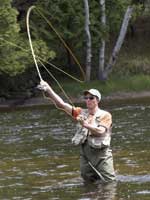
On the water!

Summer afternoon hatch
Dry Fly Rooster Cape
Dry Fly Cape Tops
Grizzly Hen Saddle

Mayfly Larva
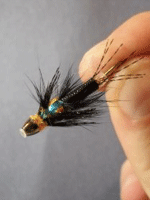
Stone Fly Pattern
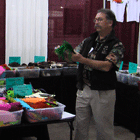
Chuck Furimski shops only the best!
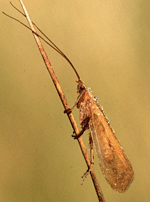
Caddis Fly
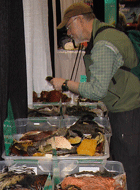
True Silver Pheasant
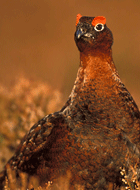
Tyin in schloepen
Jave Green Peacock
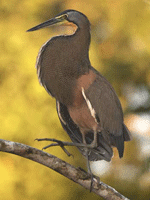
Saltwater Saddles
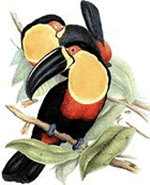
rhea - golden olive
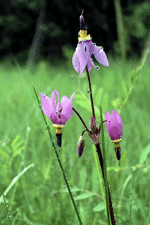
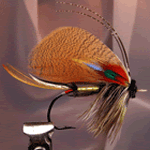
The fin

















 Quail
Quail

 Duck Quills
Duck Quills

























